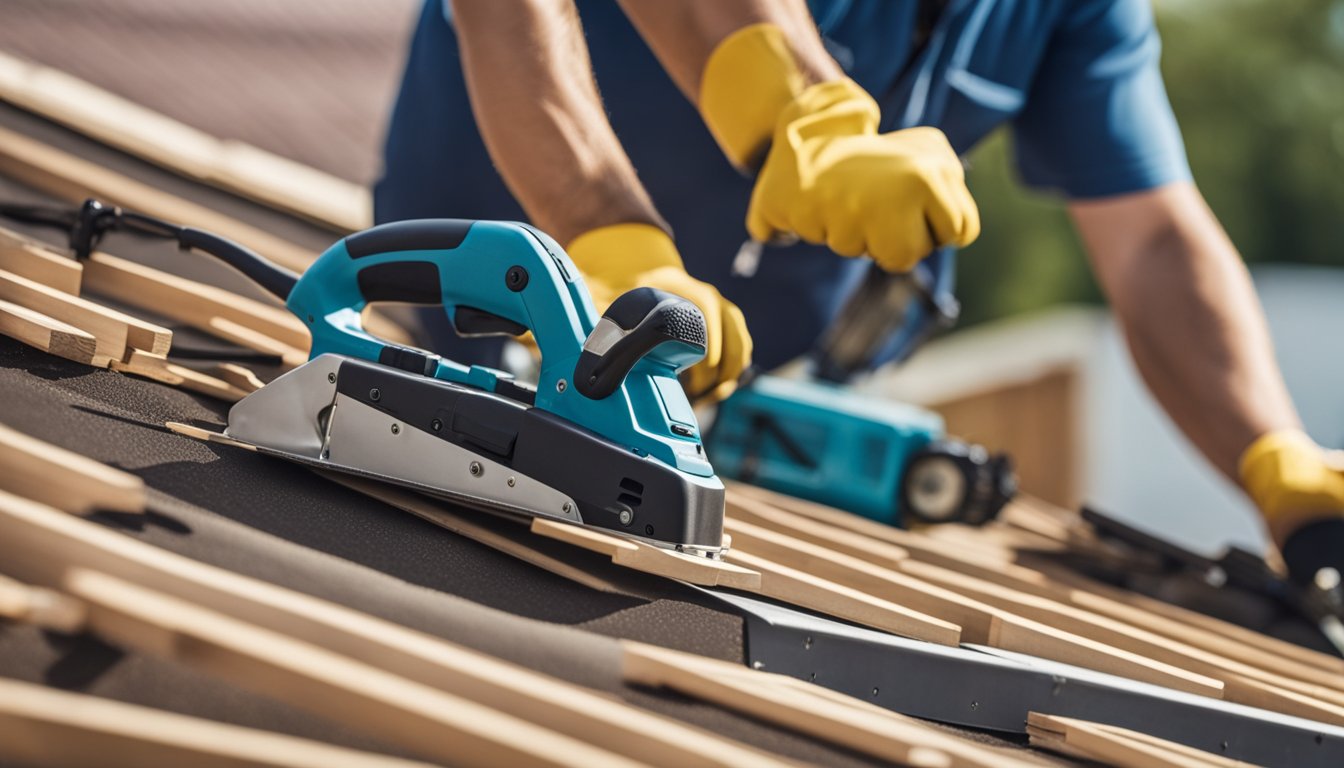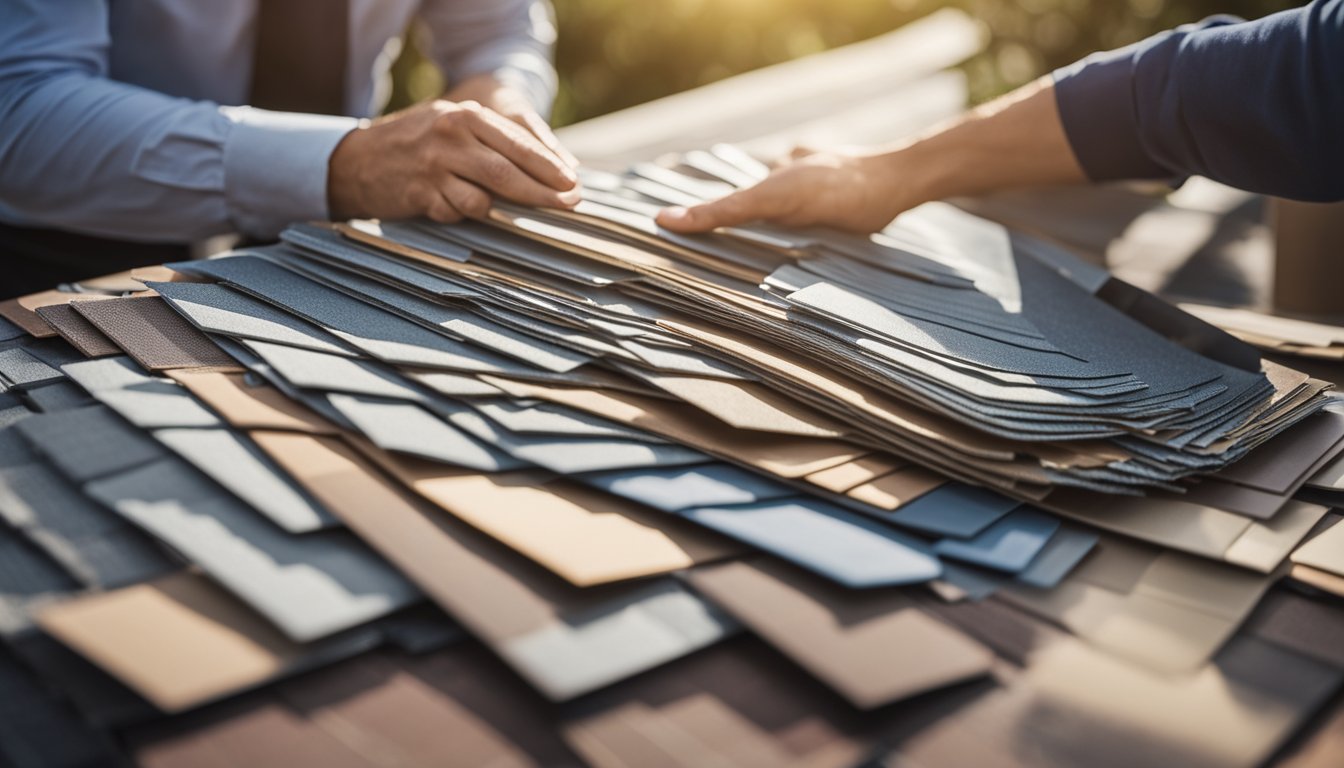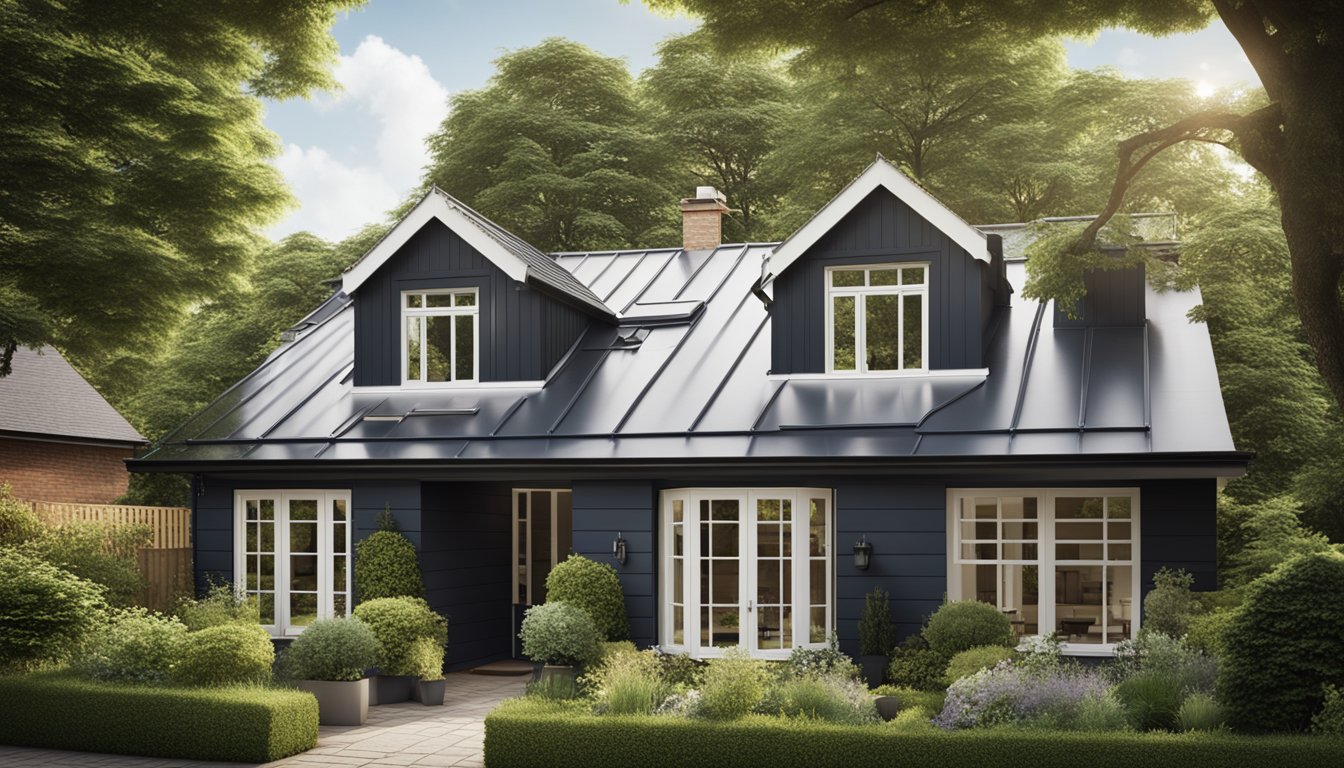Late updated: 16 Aug 2024 09:08
Written by: Oliver Bennett
Cost-Effective Roofing Solutions For UK Homes: Top Budget-Friendly Options
Exploring cost-effective roofing solutions for UK homes can be a game-changer for homeowners looking to balance quality and budget. With options like concrete tiles, green roofs, and EPDM roofing, it's possible to achieve a durable and aesthetically pleasing roof without breaking the bank. One of the most affordable and long-lasting choices includes Redland Double Roman Concrete Roof Tiles, which offer an impressive lifespan at a reasonable price.

When selecting roofing materials, it's essential to consider factors such as climate, maintenance requirements, and labour costs, which can range between £25 and £35 per hour in the UK. Understanding these key elements helps us choose the most suitable roofing solution that aligns with our financial constraints while ensuring a robust and sustainable roof.
By opting for tailored roofing strategies, such as proper insulation through green roofs or choosing materials like EPDM that require minimal maintenance, we can significantly enhance the value and longevity of our homes. Cost-effective roofing not only improves our property’s curb appeal but also contributes to overall energy efficiency and reduced long-term costs.
Key Takeaways
- Selecting durable materials like concrete tiles can save money over time.
- Labour costs vary and should be factored into the total roofing budget.
- Effective insulation and low-maintenance materials boost cost-efficiency.
Key Considerations for Selecting Roofing Materials

When selecting roofing materials, it's essential to consider the durability and cost, how the pitch and shape of the roof impact material choice, and the importance of insulation and energy efficiency.
Assessing Different Materials for Durability and Cost
Different roofing materials, such as slate, clay tiles, concrete tile, and metal roofing, each have their unique characteristics. Slate is highly durable but can be expensive. Clay tiles offer a traditional look and good longevity at a moderate cost. Concrete tiles are a cost-effective and sturdy option, while metal roofing provides durability and low maintenance at various price points.
Budget constraints may influence our choice of materials. We need to balance initial costs with long-term benefits. Roof tiles like clay or concrete might offer a good mix of durability and affordability. Metal roofing and slate are higher initial investments but can pay off with their longevity and low maintenance needs.
Understanding the Impact of Pitch and Roof Shape on Material Choice
The pitch and shape of the roof significantly affect the suitability of materials. Pitched roofs, like hip roofs and gable roofs, can accommodate a variety of materials, including tiles and metal roofing. Steeper pitches are better suited for materials like slate and tile, which prevent water accumulation and aid in drainage.
Flat roofs demand materials capable of withstanding pooling water, such as EPDM, PVC, or TPO membranes, which offer excellent waterproof properties. We must ensure that our chosen material suits the roof's structural design and local climate conditions to optimise performance and longevity.
Importance of Insulation and Energy Efficiency
Selecting roofing materials with good insulation properties can significantly impact our home's energy efficiency. Insulation reduces energy costs by maintaining stable indoor temperatures. Materials like metal roofing often come with reflective coatings to reduce heat absorption, making them ideal for enhancing thermal performance.
Roof tiles such as clay and concrete offer excellent thermal mass, which helps maintain cool indoor temperatures during summer and retains heat during winter. Prioritising materials with high energy efficiency ratings can result in long-term savings and improved environmental impact.
We must consider how well a material will insulate our home and its potential to lower energy consumption, aligning with the growing emphasis on sustainable living.
Strategies for Roof Installation and Maintenance
Selecting the right roofing materials and managing installation costs effectively can ensure a durable roof. Additionally, regular maintenance is crucial for prolonging the roof's lifespan and avoiding costly repairs.
Managing Roof Installation Costs and Processes
Roof installation expenses in the UK depend on various factors, including materials, labour costs, and project complexity. For instance, corrugated steel costs around £50-£70 per m², while fibre cement tiles range between £13-£25 per m². To manage expenses, consider sourcing materials from reputable suppliers and negotiating labour charges.
Labour rates for roofers typically fall between £25 and £35 per hour or £200 to £280 per day. Planning the project during favourable weather conditions can prevent delays, reducing labour costs associated with extended timelines. Always ensure that quotes include the cost for scaffolding and building regulations compliance to avoid hidden charges.
Effective Maintenance to Prolong Roof Lifespan
Proper maintenance boosts the longevity of roofing materials and prevents issues such as leaks, mould, and water damage. Inspecting the roof at least twice a year and after severe weather events is crucial. Look for damaged or missing tiles, broken seals, and clogged gutters.
Clearing debris from the roof and gutters enhances drainage and prevents water build-up. Minor repairs like fixing small leaks and replacing damaged roofing felt can be carried out by homeowners. For more complex tasks, hire professional tradespeople who can accurately assess and address problems.
Calculating the True Cost of Roof Replacement
Understanding the true cost of roof replacement requires considering roof removal, installation, and potential repairs. Prices vary significantly based on the roof size and materials. For example, replacing a gable roof can cost between £7,500 and £16,250.
In addition to material costs, factor in secondary expenses like scaffolding and accessibility, which may increase labour costs. Always get multiple quotes from reputable roofers and verify their credentials. Accounting for regular maintenance in your budgeting can mitigate unexpected expenses, ensuring the roof stays in good condition for its entire lifespan.
Frequently Asked Questions

Choosing cost-effective roofing solutions for UK homes requires considering factors like material affordability, longevity, and suitability for local weather conditions.
What materials offer the best balance between affordability and longevity for roofing in the UK?
EPDM (ethylene propylene diene terpolymer) is a popular choice due to its cost-effectiveness and durability. It resists UV rays and weathering, making it a reliable option for flat roofs.
Which roofing material provides the best value for money for a UK house?
Metal roofing, especially steel and aluminium, offers great value. It's lightweight, durable, and can last up to 50 years with minimal maintenance.
How does roof design impact the cost-effectiveness of a roofing solution in the UK?
Roof design significantly affects costs. Simpler designs like flat or gable roofs are generally more cost-effective to install and maintain. Complex designs with multiple angles or intricate features tend to increase both material and labour costs.
What are the most durable and cost-effective flat roofing materials suitable for UK weather?
Aside from EPDM, fibreglass roofing systems are also durable and cost-effective. They offer excellent resistance to extreme weather conditions and have a lifespan of up to 30 years.
For UK home balconies, which flat roof materials combine cost-efficiency with suitability for foot traffic?
Liquid roofing membranes and reinforced bitumen membranes are good choices for balconies. These materials are durable, waterproof, and designed to handle foot traffic effectively.
Which roofing sheet options are considered the most affordable for UK homeowners?
Corrugated metal sheets are among the most affordable options. They are easy to install and provide excellent durability. Bitumen sheets are also cost-effective and suitable for a variety of roofing applications.
